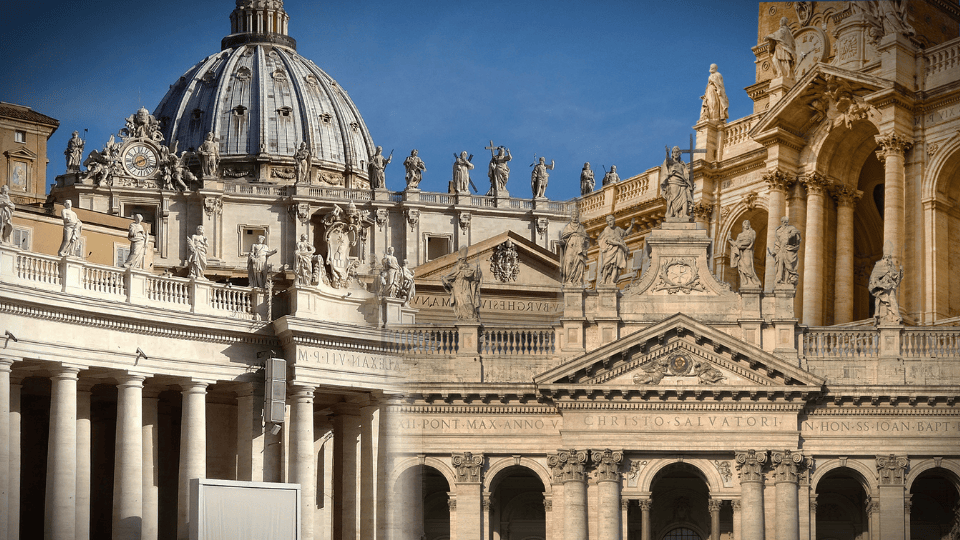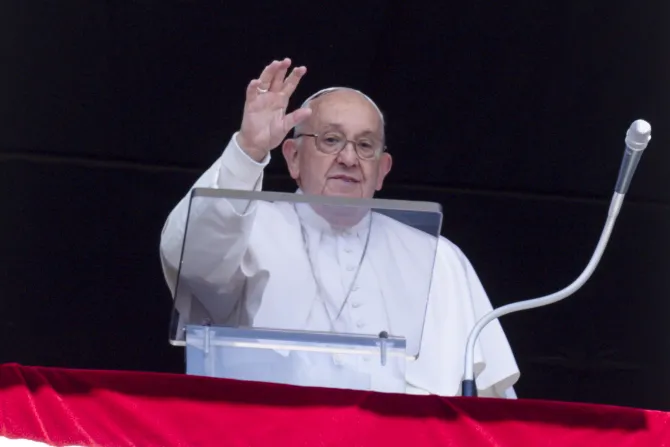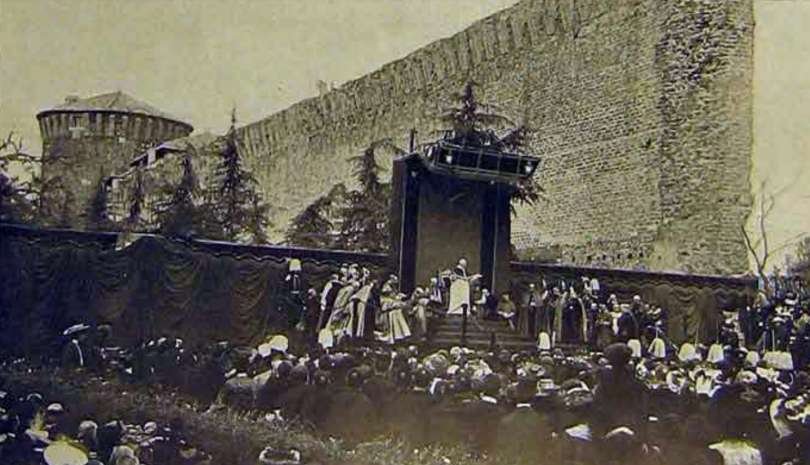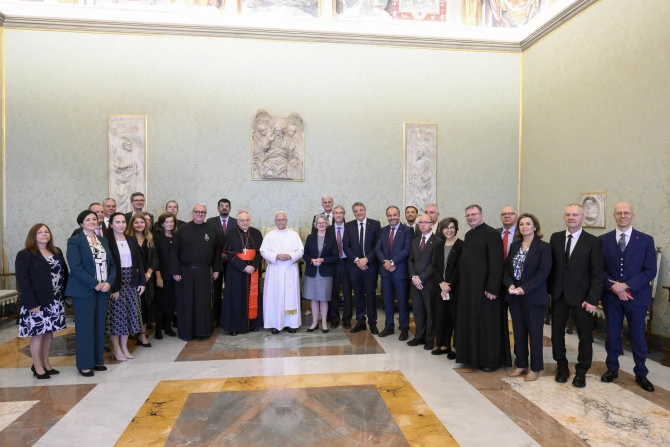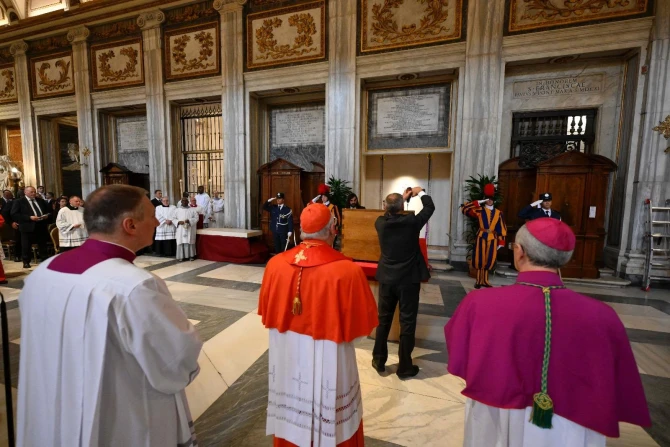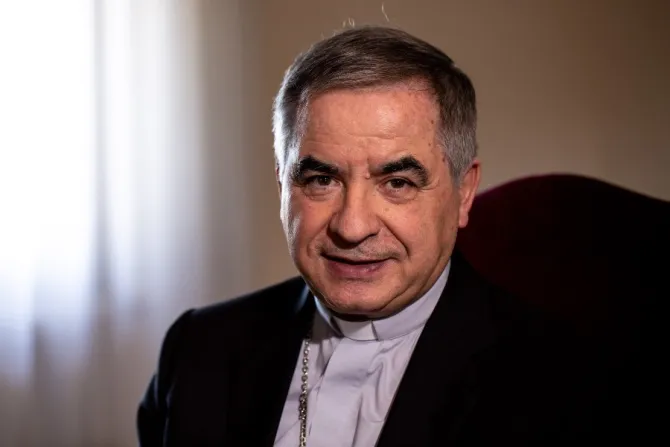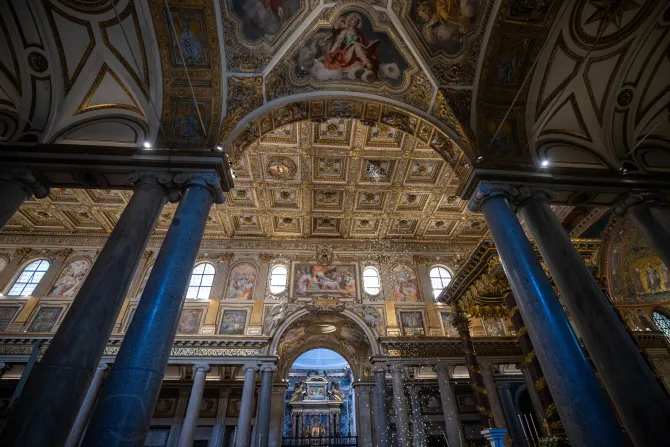With the celebration of his first Mass at the Archbasilica of St. John Lateran, Mater Ecclesiae, Mother of all Churches, Pope Leo XIV took possession of the seat of the Bishop of Rome. It is from here that the pontiff governs not just the Diocese of Rome, but the universal Church.
FIND THE POPE’S BIOGRAPHY HERE
“Thank you for walking together! Let us all walk together! Always count on me, as a Christian with you and Bishop for you,” the Pope reminded Romans and the whole Church.
One of the first moments of the pontificate of every pope is visiting the four Major Papal Basilicas in Rome, a tradition that has continued since 1295, during the reign of Boniface VIII.
Professor at the Pontifical Gregorian University, Fr. Roberto Regoli, notes, “Technically the ‘taking possession’ is only one, that of St. John Lateran, where the bishop of Rome goes to take his cathedra. At that moment there is the fullness of the papal function. And the other presences in the basilicas are simply papal presences of initiation of the pontificate.”
St. John Lateran’s, St. Peter’s in the Vatican, Saint Mary Major’s, and St. Paul’s Outside the Walls – all of them hold a special status within the Church.
Fr. Regoli explains, ““In the past, the pope, in order to go to take possession of the Lateran, would start from St. Peter’s, which was the place of the spiritual abode of the popes. And from there, going through the city, passing by the Capitol, which was the seat of the Pope’s civil power, he would come to St. John Lateran.”
Each basilica has its special role in the Church. Saint Peter’s and Saint Paul’s Outside the Walls are sepulchral basilicas where the remains of the two Apostles Peter and Paul are deposited.
It was in Saint Peter’s Basilica in the Vatican that Pope Leo XIV inaugurated his ministry as Successor of Peter on May 18th with the two elements that mark the beginning of the pontificate: the papal pallium and the fisherman’s ring.
Two days later Pope Leo visited Saint Paul’s Outside the Walls.
“Saint Paul, together with Saint Peter, is the column of Christianity. He’s the one upon whom Jesus Christ founded his Church together with Peter. Peter is the rock. And Paul is the defender of the world, he is the one who went around the world to spread the truth, which is the gospel. This is why this basilica, where his body is kept and taken care by us, the monks, is visited by the Pope,” Fr. Ludovico Torrisi, Master of Novices of the Abbey of St. Paul Outside the Walls, explains.
St. Mary Major, on the other hand, is a story apart from the others; it is not the sign of the bishop’s papal power nor of apostolic succession, but it is one of the oldest churches dedicated to Mary after the Council of Ephesus in 431.
The visit to St. Mary Major’s Basilica — where Pope Francis used to go and where he is buried — manifests the pope’s Marian devotion. Leo XIV came here after the solemn Mass in Saint John Lateran to venerate the most famous icon of the city of Rome, the ‘Salus Populi Romani’:
“We ask God through the intercession of His Blessed Mother to bless all of you, your families, your loved ones and help us all to walk together in the church, united as one family of God.”
The Pope’s presence in the papal basilicas during these first days of his pontificate was not only very important but highly symbolic as well.
Fr. Regoli notes, “The most important symbol of all these basilicas is enshrined in St. John Lateran, and it is precisely from the cathedra of the Bishop of Rome, a cathedra that only he can use and no-one else. In the other basilicas we have other signs: at St. Peter’s the tomb of Peter, where also the “palliums” that will be entrusted to future archbishops are kept. At St. Paul’s we have the reliques of Paul’s chains, at St. Mary Major, the strong Marian presence and the image of Salus Populi Romani.”
The beginning of the Pontificate of Pope Leo XIV comes at a unique time in the Church. It is the Jubilee Year. Just once in the History before, over three hundred years ago, we had a similar coincidence, when in the Holy Year 1700 Pope Innocent XII passed away and another Pope, Clement XI was elected.
“The Jubilee went on anyway. Because we draw on the deposit of the Church,” Fr. Regoli explains, “the deposit of grace, the merits of Christ and the saints, and the Jubilee goes on, we had the proof of it even during the time of the Sede Vacante.”
SIGN UP FOR OUR NEWSLETTER HERE
Adapted by Jacob Stein

